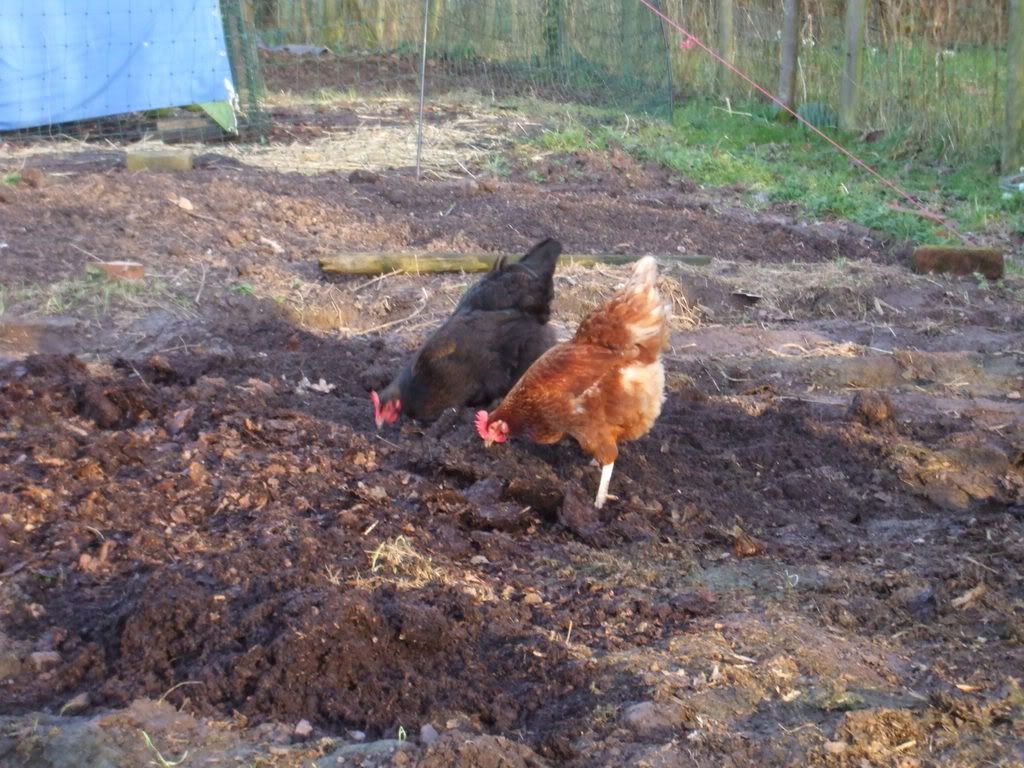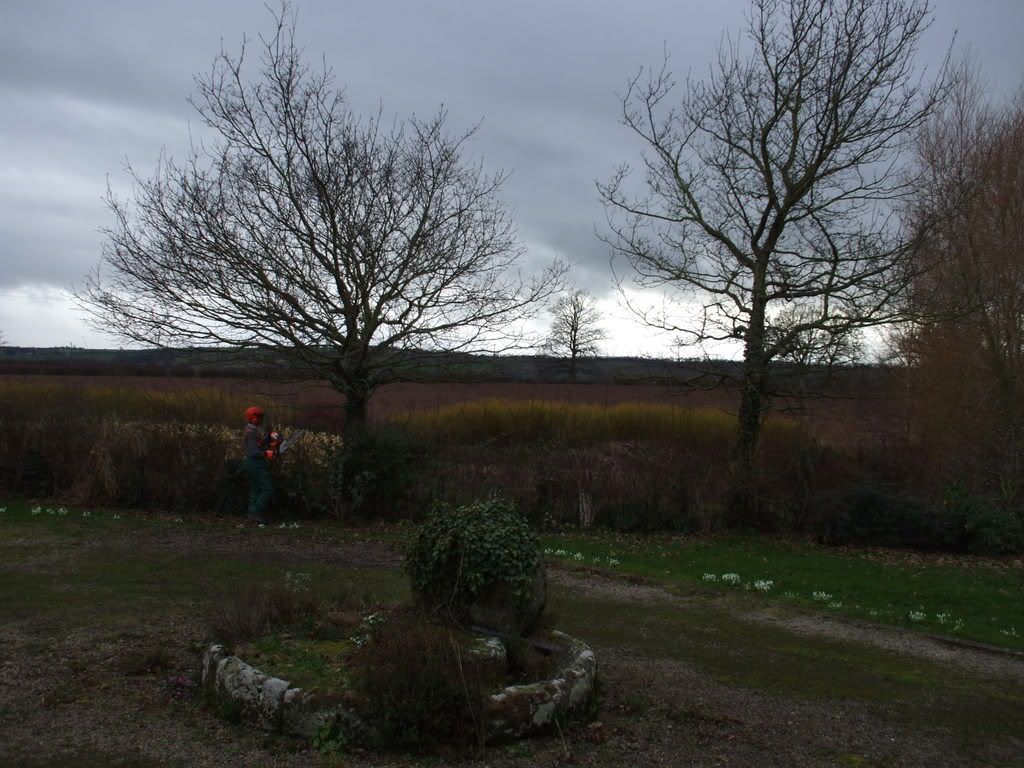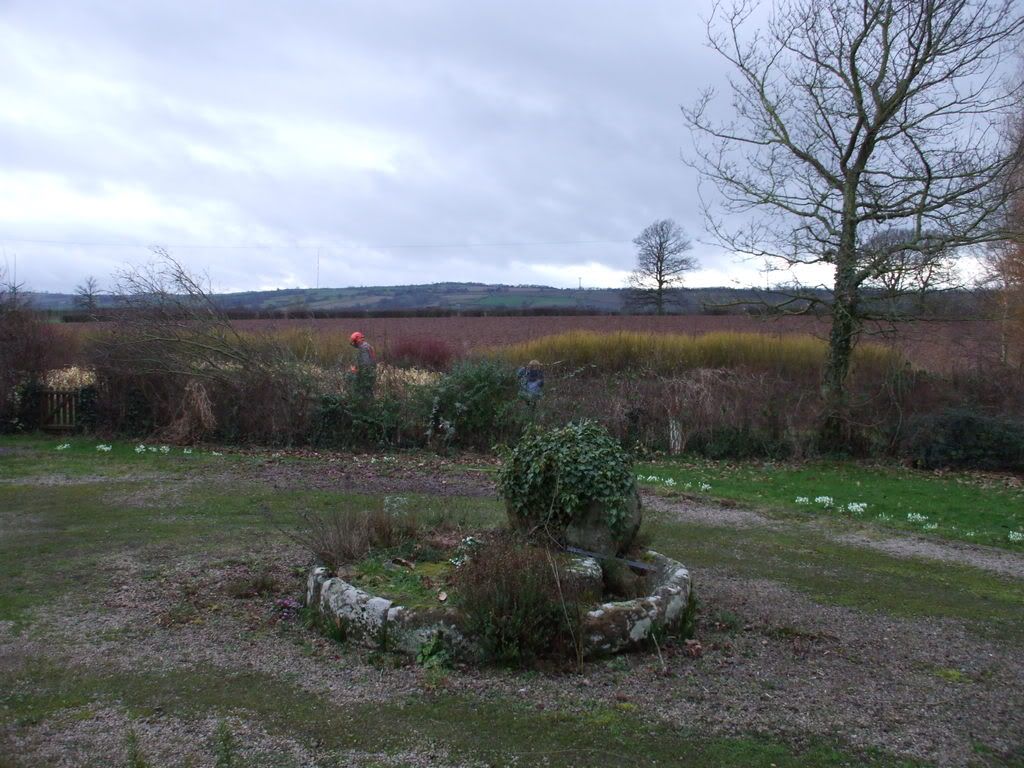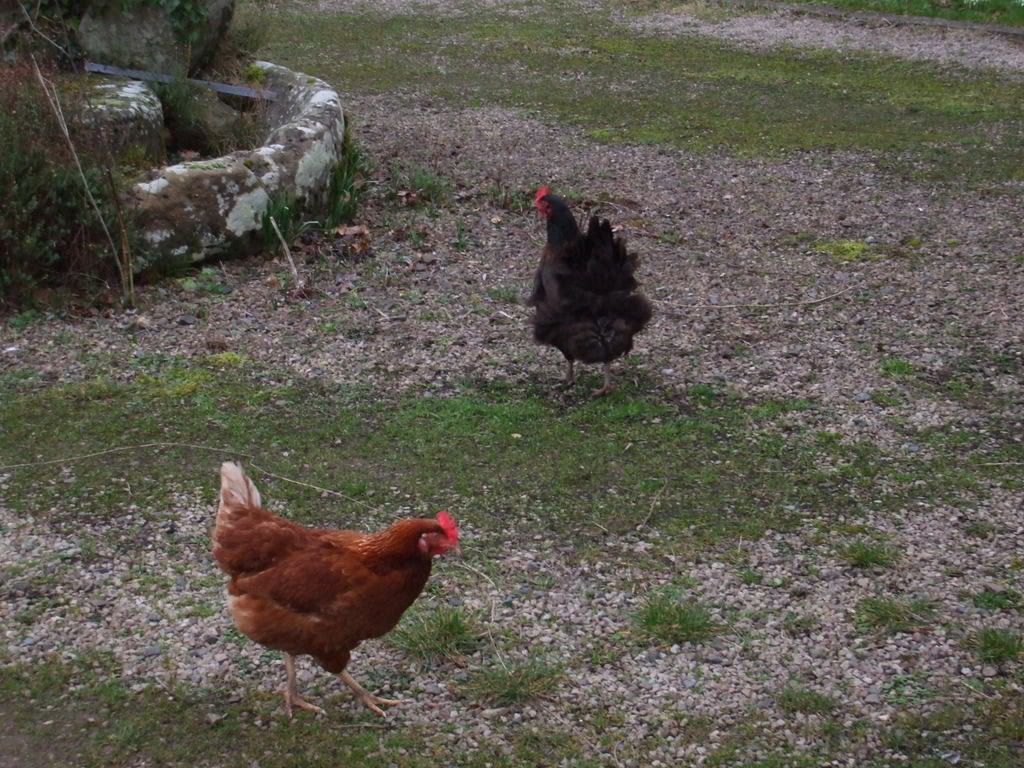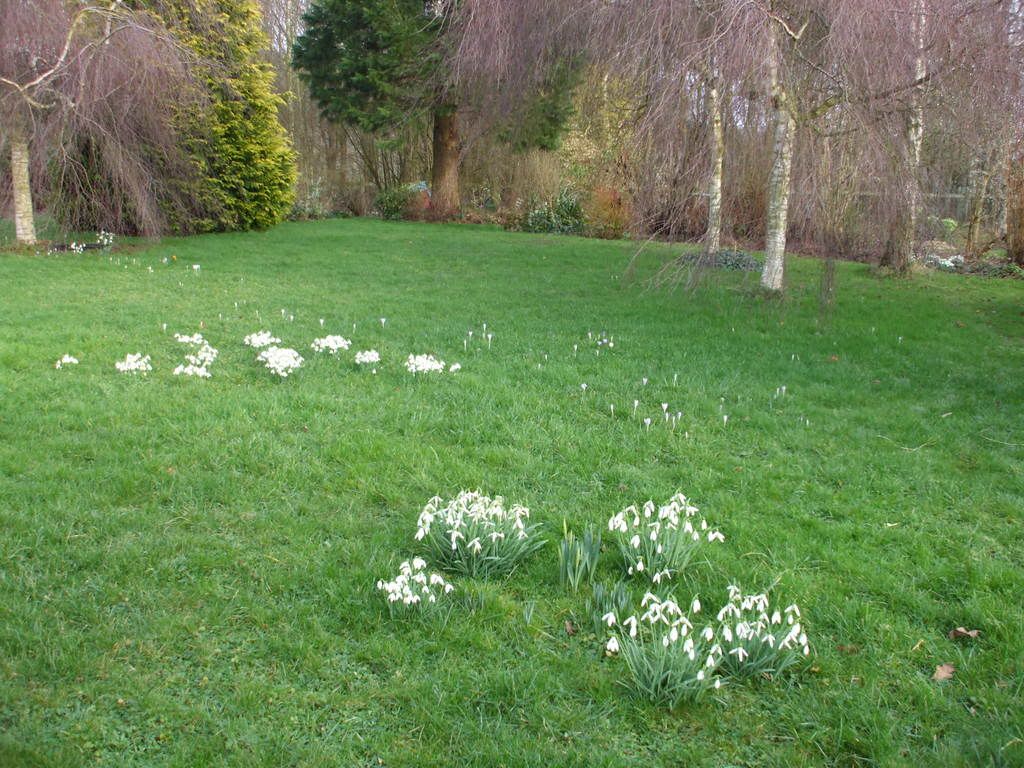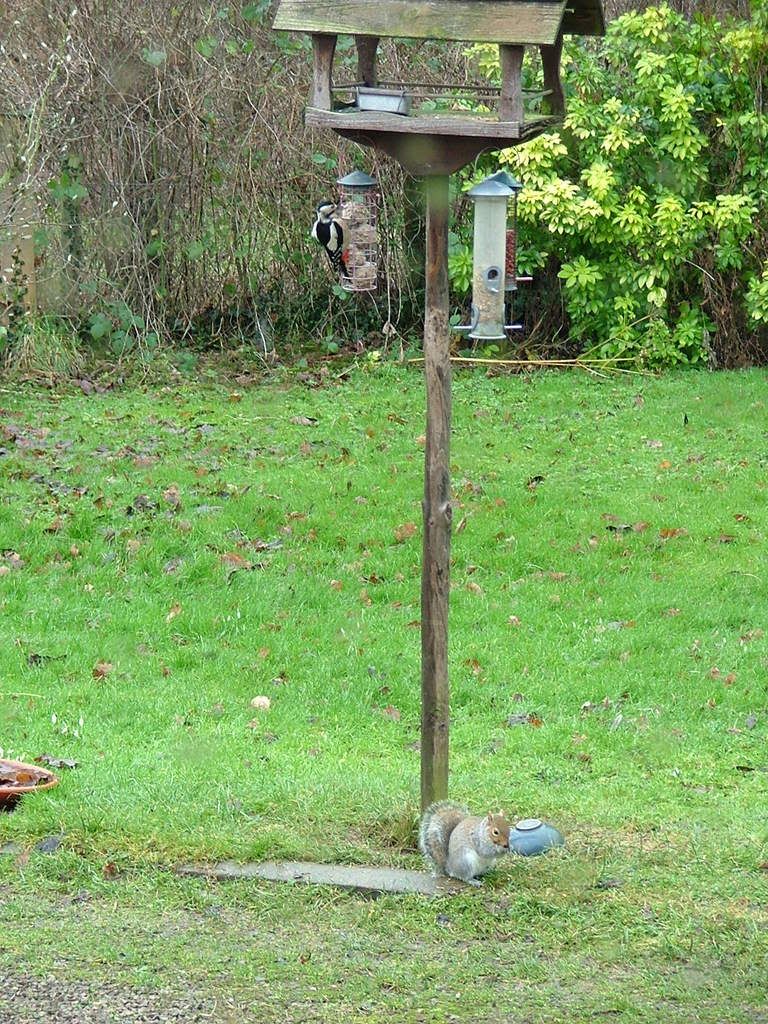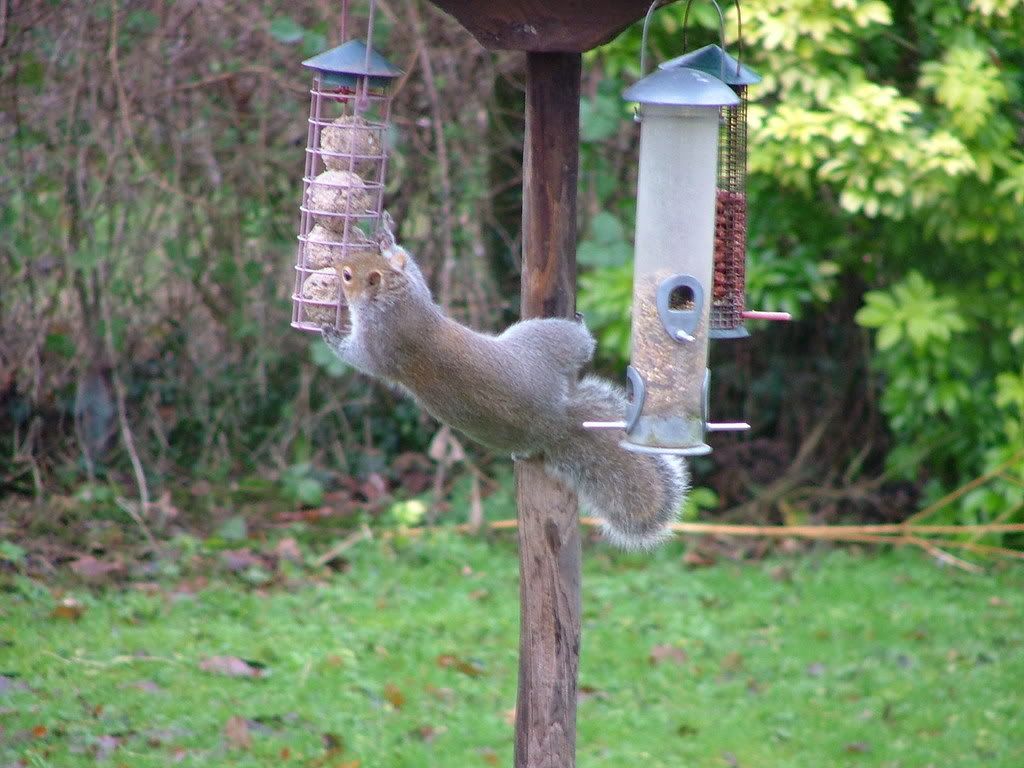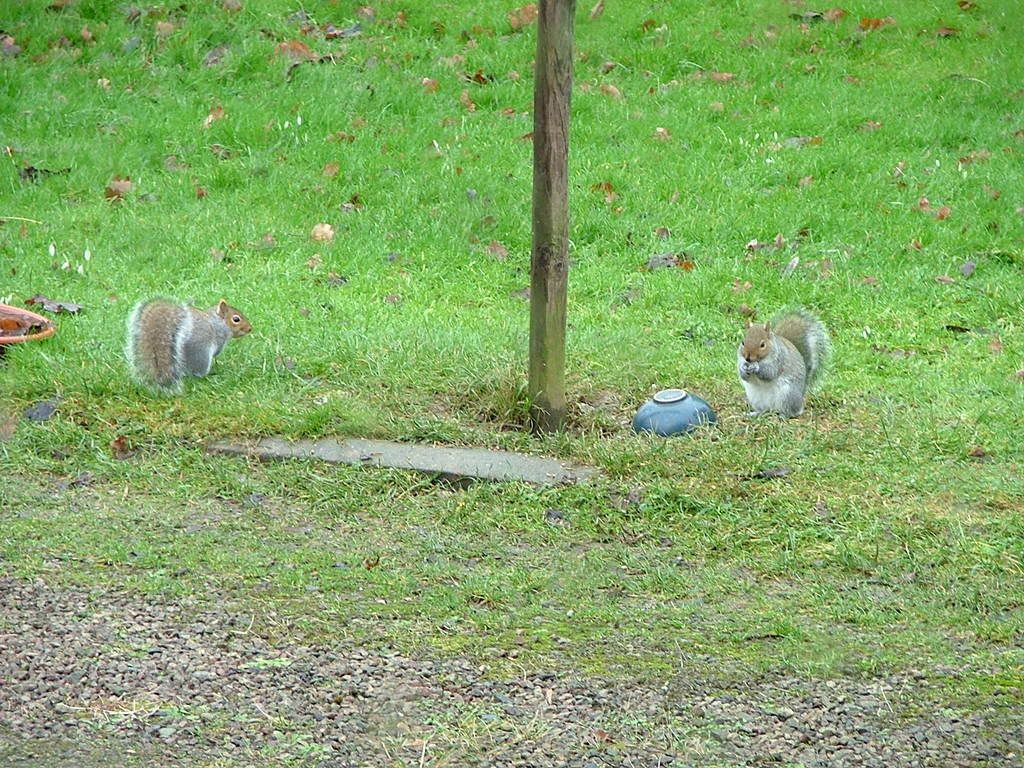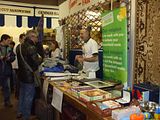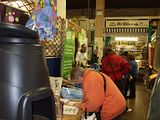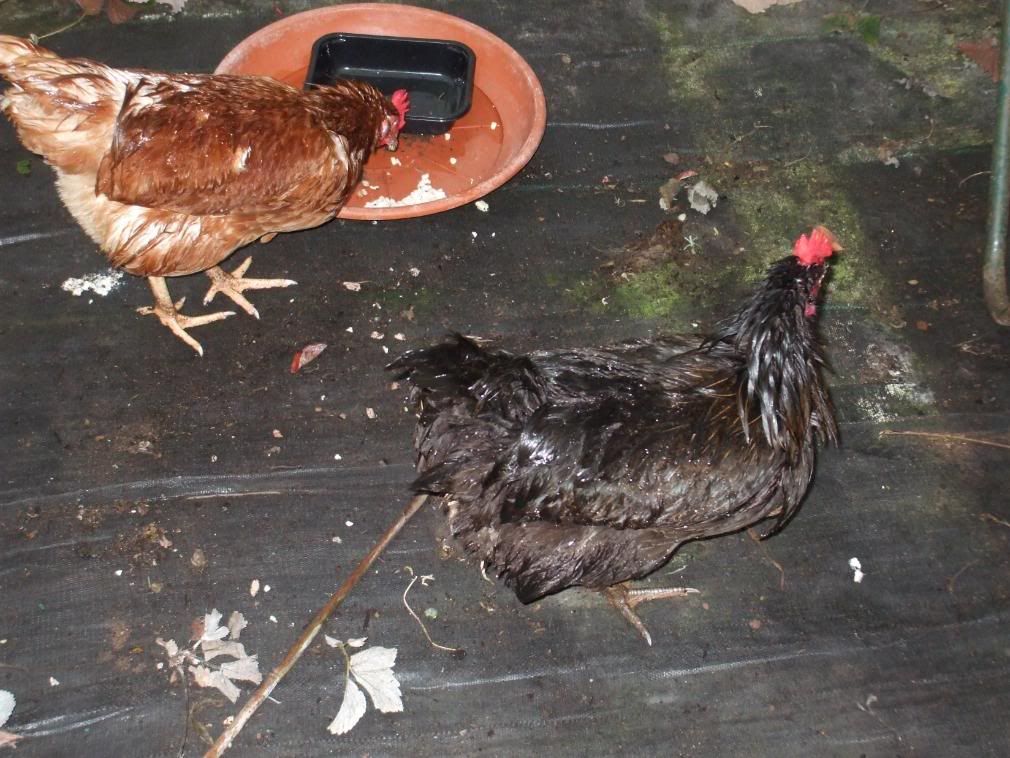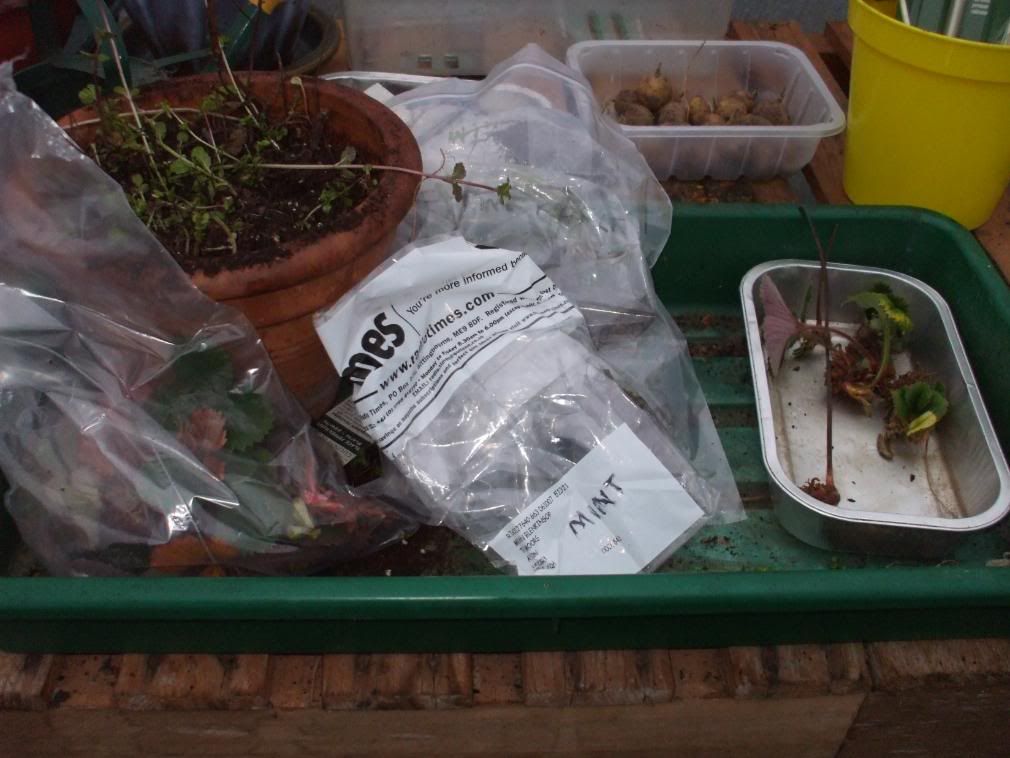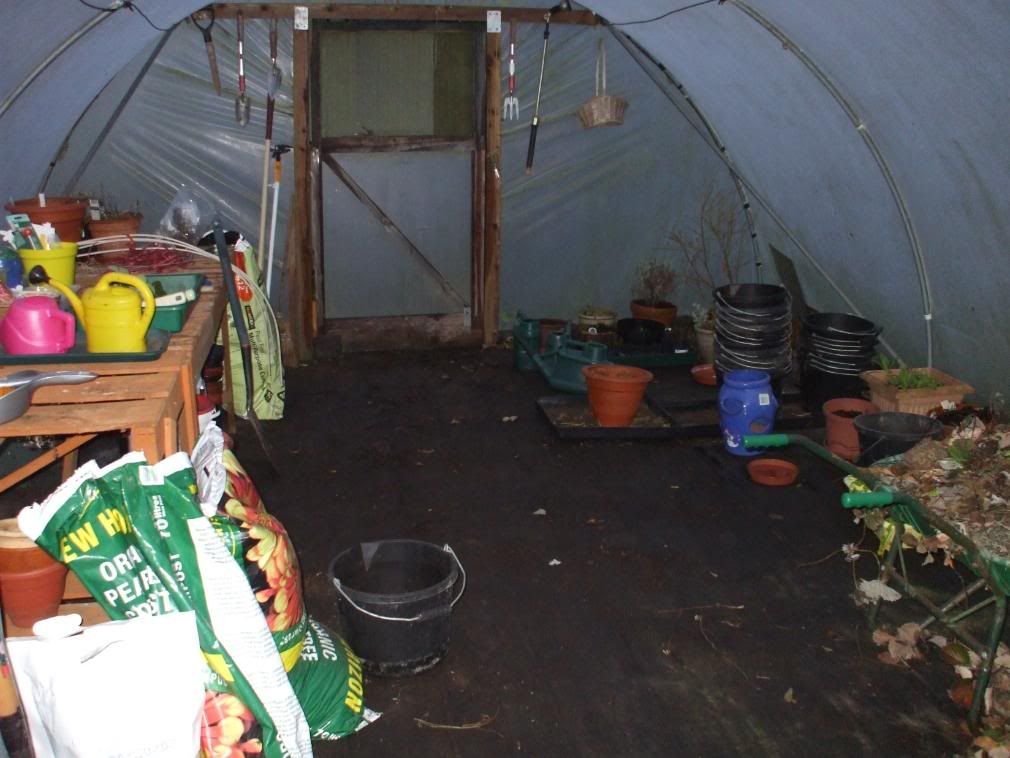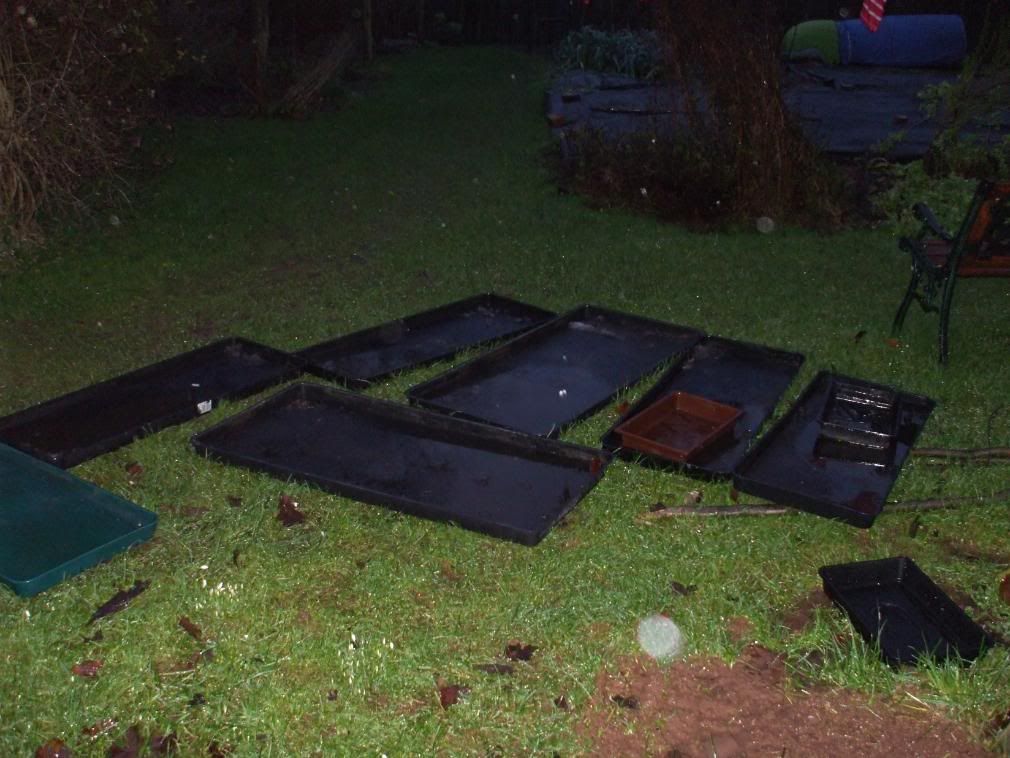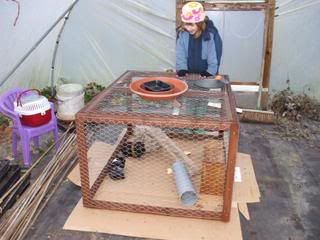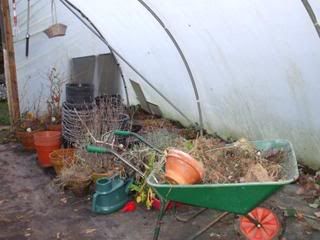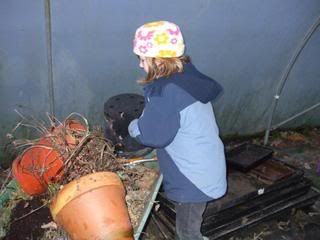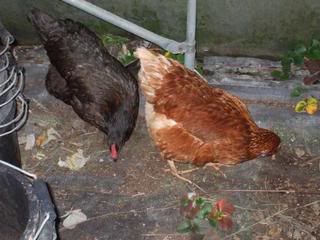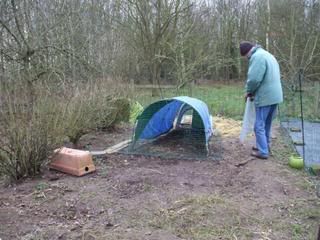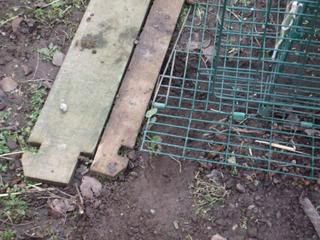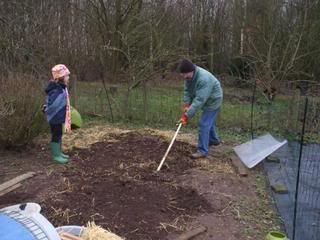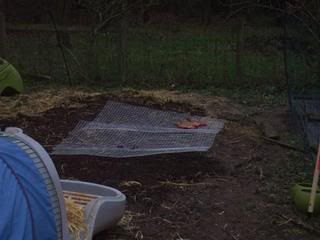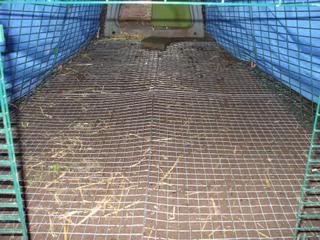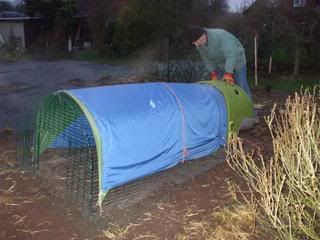
We have 2 hens called Henny Penny and Ginger. They live in a green Eglu in the orchard, they have a 50 m circumference area to roam in when they are penned in...and the whole of the garden to free range in once they have laid their eggs
(we only do this cos Henny tends to lay where ever she is...and with 3/4 of an acre of wilderness garden it gets a bit hard to play "hunt the egg"!!!
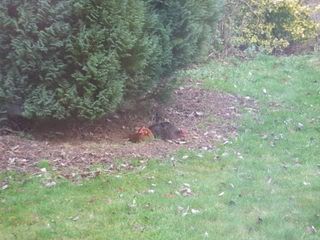
So...they are VERY free range hens! They are bright, friendly, inquisitive and such good fun! How ANYONE can possibly think it is OK to shut hens up in very little space is beyond me and ESPECIALLY when you get to see what the NATURAL behaviour of a hen actually IS...I find it truly beyond comprehension.
BUT THAT is what the life of a battery hen is like and UNLESS YOU only ever buy free range or Organic eggs (AND make sure thats what ALL other products you eat which have got egg in) then YOU may well be eating eggs laid by hens who live in FAR FAR less than ideal conditions ( I am restraining my language deliberately here...) The same goes for the chicken meat you eat. Unless it is free range or ideally Organic....it may well have been reared in an intensive broiler unit.
More than 850 million broiler chickens are slaughtered every year in the UK. And of these hundreds of millions of chickens, most of them - more than 95% - are reared inside, produced in industrial conditions in vast, enclosed sheds. Their lives are pitiful – but at least they’re short...
Standard chickens are grown from newly hatched chick to oven-ready bird in an astonishing 39 days, that’s just over 5 weeks. (An organic chicken, which grows at a natural pace, takes more than twice as long.)
How do they do this? Poultry scientists have bred chickens which grow fast. As they grow, their living space – smaller than an A4 piece of paper for each bird – gets more and more cramped as they near the end of their short lives. With around 17 birds packed into each square metre they have barely enough space to walk, preen themselves, stretch their wings or even turn around.
Such cramped conditions and rapid growth cause severe welfare problems. Chronic lameness is common – one third of chickens have difficulty walking without pain. The stress on their hearts and lungs can cause heart failure. About 5% die or have to be culled prematurely.
A typical chicken shed holds 40,000 birds… They never set foot outside or see natural light… They feed around the clock - with as little as one hour of darkness for every 24 hour period.
It’s not nice – but it’s certainly cheap. And THAT is how supermarkets can afford to offer you two whole birds for a fiver… or sell a whole fresh British chicken for £2.
There
is another way… You could rear your own hens for eggs and/or to eat......or if that's not for you...you could make sure you ONLY buy free reange ( and ideally Organic) eggs AND meat!!!
AND you should DEFINATELY watch Hugh Fearnly-Whittingstall in
Hugh's Chicken Run: 7th, 8th and 9th January 2008, 9pm, Channel 4 and
join his Chicken Out! Campaign. Part of this new campaign will be a new TV series on Channel 4, which will help you to understand the conditions in which most table birds are reared, and to put pressure on the industry to raise its standards. Chicken Out! is being led by River Cottage locals, especially in and around Axminster, who are boycotting intensively-reared chickens and choosing free range instead. Hugh F-W needs you to do the same.
And I PROMISE you, once you have tried the taste of proper free range chicken meat you will NEVER want to eat anything else!
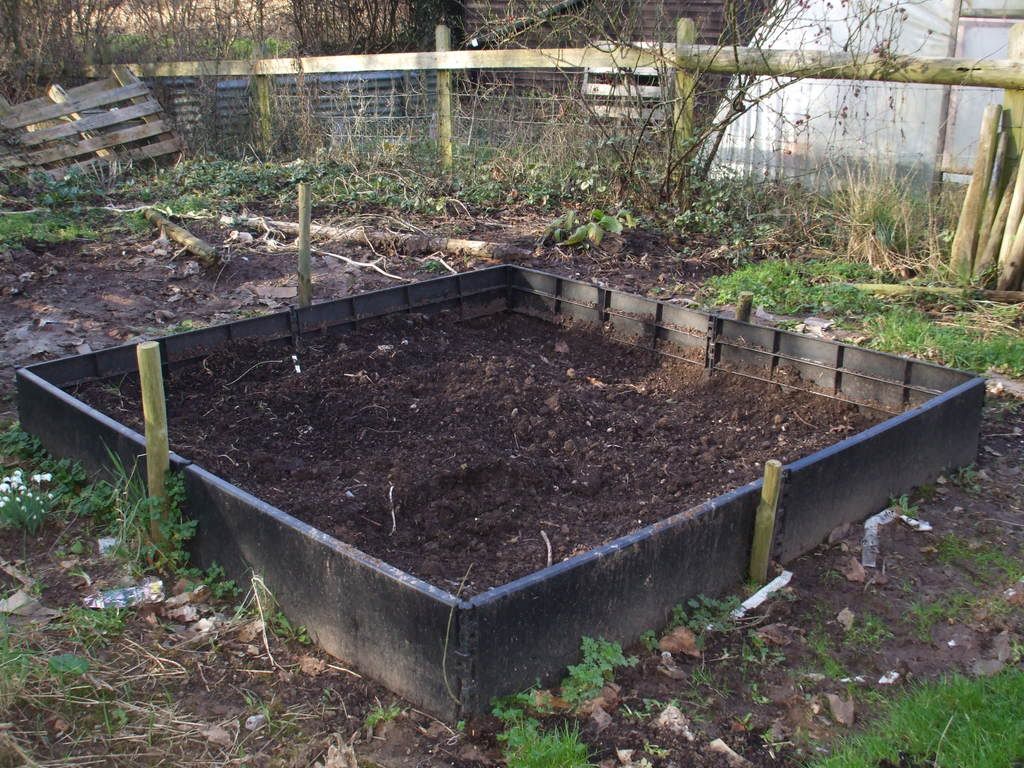 In the last few days I have (slowly) shifted 2000 l of compost out of the raised bed where it has lived for the last 6 months ( and where it grew a shed load of "Three Sisters" ie Sweetcorn, Beans and Pumpkins) and spread it on the veg patch.
In the last few days I have (slowly) shifted 2000 l of compost out of the raised bed where it has lived for the last 6 months ( and where it grew a shed load of "Three Sisters" ie Sweetcorn, Beans and Pumpkins) and spread it on the veg patch.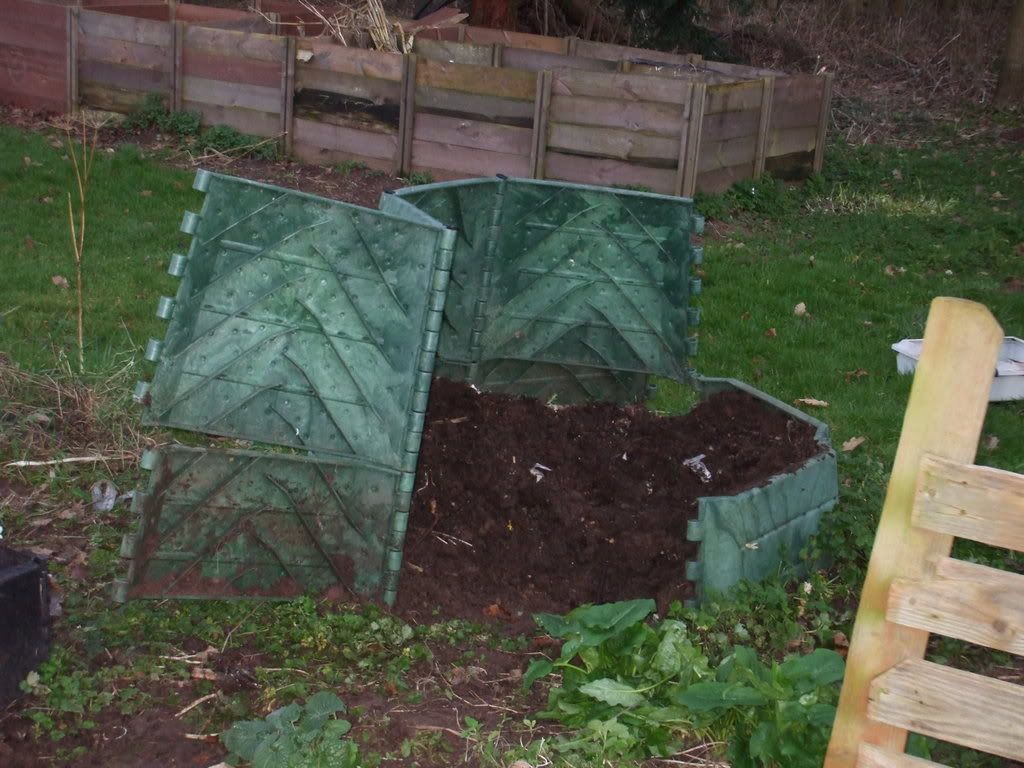 I have also turned one of the compost bins
I have also turned one of the compost bins 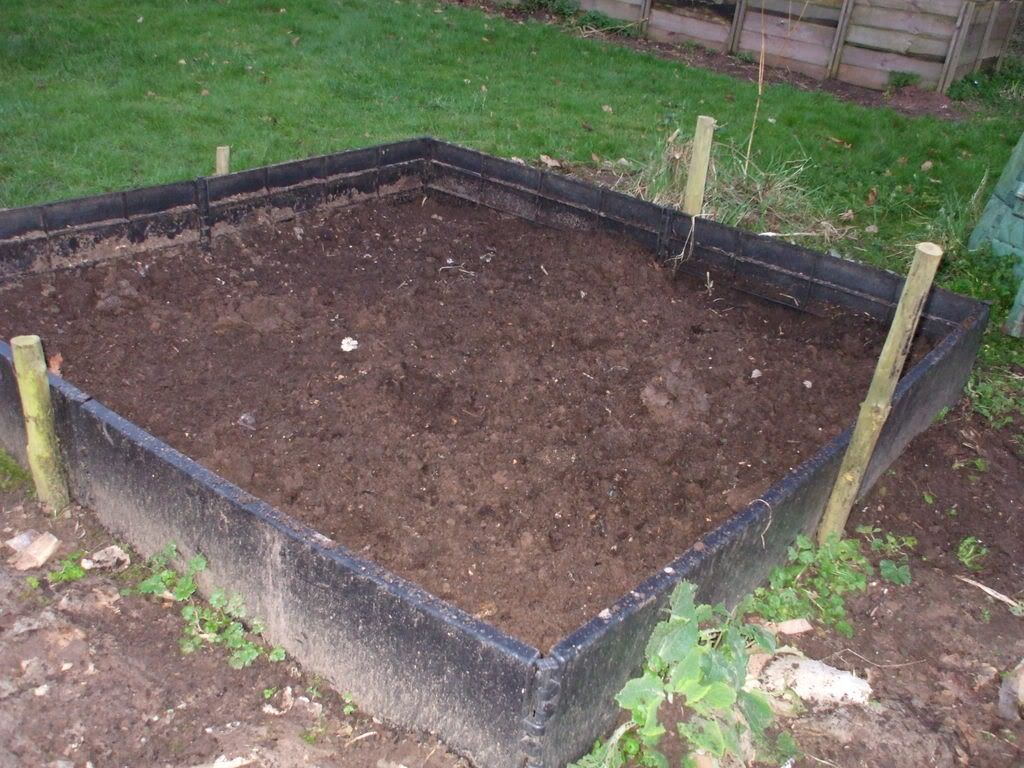 and dug out the contents to refill up the raised bed to grow 2008's "Three Sisters" crop.
and dug out the contents to refill up the raised bed to grow 2008's "Three Sisters" crop.